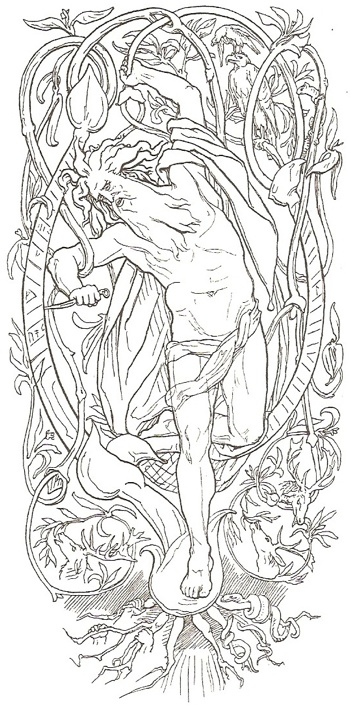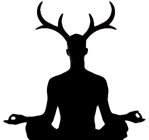Adventures in Zen Odinism
29 Dec 2012This is a guest post by Steve Davies of the Odin the Wanderer blog.
As a follower of Al’s “Open Buddha” blog I was very excited to see the resurrection of Pagan Dharma. As a fairly longstanding magical practitioner I have often struggled with the lack of technology within Neo-paganism with regards the skilful cultivation of being. In the busyness of the occult revival we have become adept at producing and doing, but have struggled to find ways of accessing stillness.
One of the ways I have sought to bring together my own desire for both a profound stillness and the transformative path of magic has been via my involvement in the hearth of Odin the Wanderer.
The small number of us who meet to celebrate the turning of the year are moved at a profound level by the weightiness of the Northern aesthetic – its emphasis on honour, its sparseness and sense of stoicism – the Gods, Goddesses and Wights that we honour and follow are clearly within the Northern Mythos since as we meet on the land this makes sense at a primal level. Now this is all sounding fairly normal for anyone who has been to a blot or a hearth before, but what one might be struck by is that we don’t say a lot! We spend most of our time sitting down and we also (gasp) spend some of our time laughing.
As to the ‘how’, we deem what we are doing as being Zen related. As most readers of this blog will know Zen is the Japanese translation of Chan which in turn is the Chinese translation of the Sanskrit Dhyana i.e. meditation. Meditation can mean many things but I think the ideas of mindfulness, awareness, wakefulness and quiet receptivity are at the heart of the experience I am pointing to. In practice this means that after acknowledging the elements and directions and welcoming the Gods, Goddesses and Wights, we spend most of our time listening both to the inner stirrings of ourselves and to the spirit of place via zazen. For us this echoes the ancient practice of “uta seti” or sitting out when the wisdom of the ancestors and spirits of place were sought. As the practitioner seeks to rest their attention with the physical sensation of the breath, a spaciousness of consciousness is possible – a personal ginungagap where the stirrings of new realities can be sensed.
In Havamal 138 Odin speaks of “giving Self to Self” during his seeking of Runa on the World Tree. Similarly for the Northern mystic seeking to utilize mindfulness techniques there can be the creation of a space where outdated “certainties” can be shed so that remanifestation can occur. For those seeking the hero’s path this does not mean the abandonment of Self, rather it opens up new vistas of potential becoming.

“I know that I hung on a windy tree nine long nights, wounded with a spear, dedicated to Odin, myself to myself, on that tree of which no man knows from where its roots run. No bread did they give me nor drink from a horn, Downwards I peered; I took up the runes, screaming I took them, Then I fell back from there.”
The approach to this work has been gradual and reliant on honest feedback from the group’s participants. In contrast to a homogenised syncretism, we are seeking a form of conscious hybridism where the best of both heathenry and the dharma can inform each other. In practice this has entailed a dedicated engagement with primary source material and a degree of transparency with regards that which feels aesthetically harmonious rather than jarring.
The dharma has always been highly adaptive in terms of the way it has utilised the shamanic traditions of those cultures that it encountered whether that be Taoism, Bon or Shinto. As has already been highlighted in other posts, in seeking to de-mythologize western Buddhism in order to make the dharma scientifically and psychologically relevant we are in real danger of disconnecting it from the richness that a pagan context can provide. Without the awareness of place, time and the body that pagan traditions often provide, we risk a hollowed out practice that fails to connect to the whole of our being.
